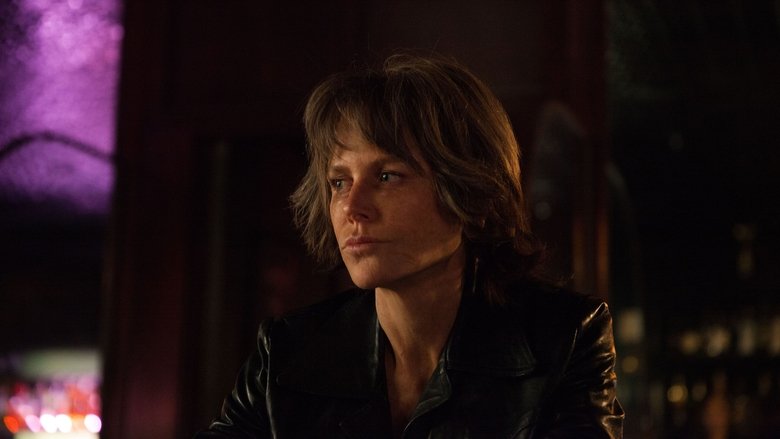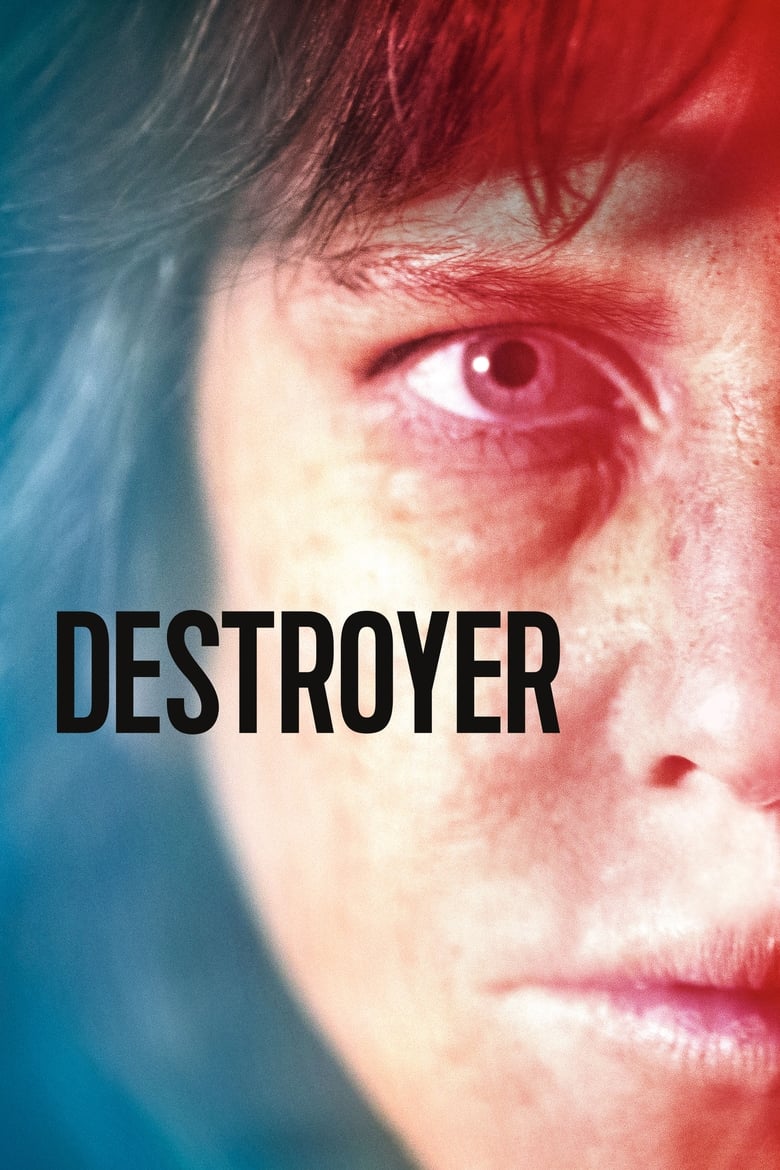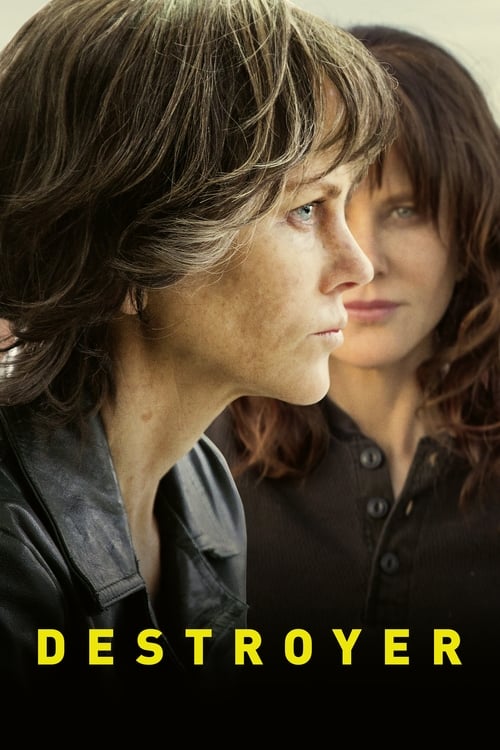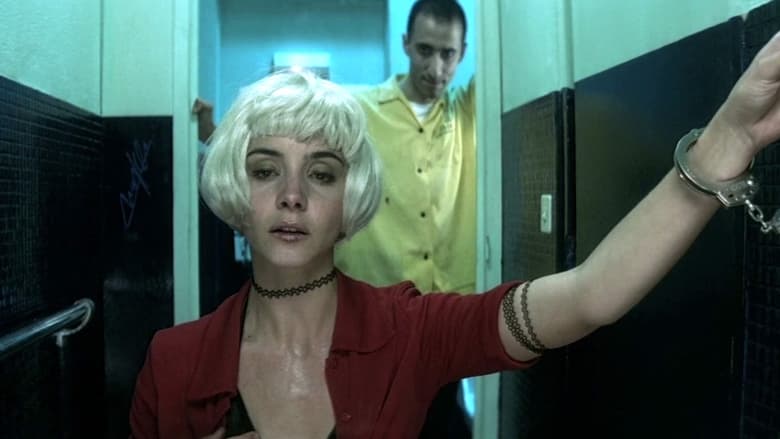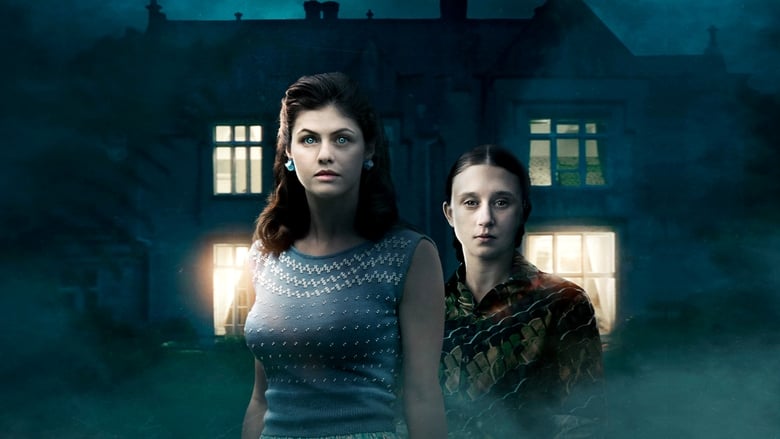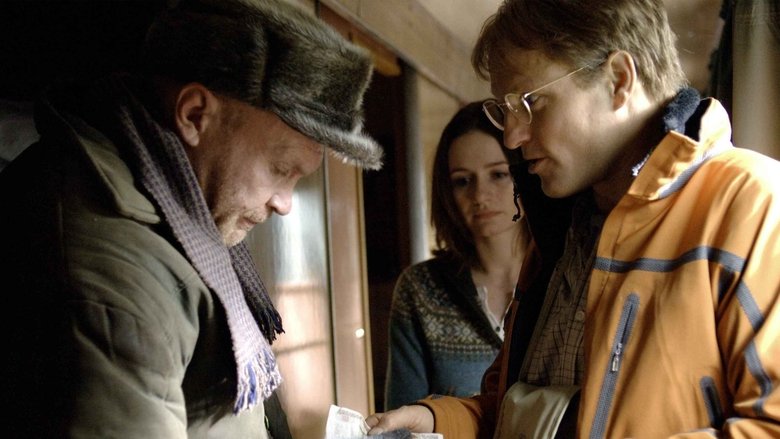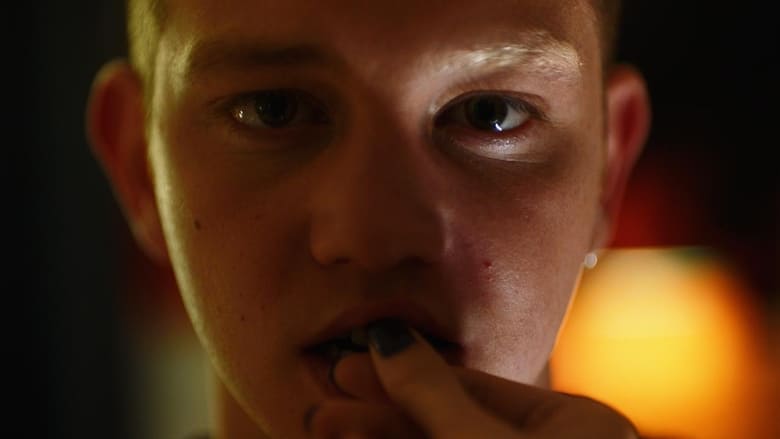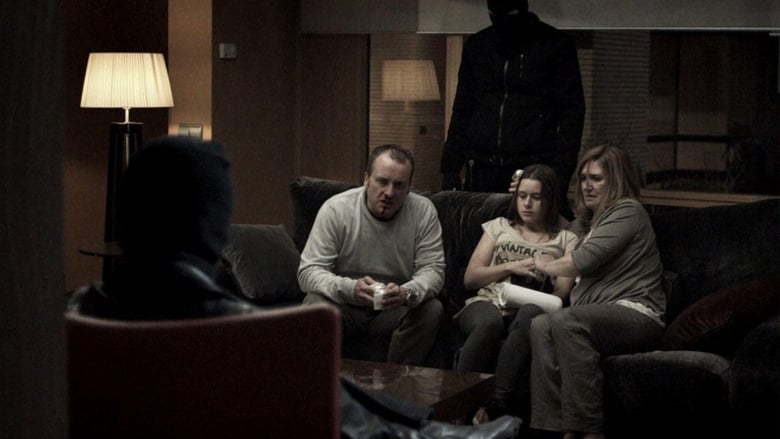A superb central performance and an impressive aesthetic design elevate a quotidian plot
I think women are constantly reminded of the biological circle of life, the giving of life, the end of life, and I feel like we are so defined by and bound to our biological capabilities. I wanted to imagine the masculine construct of narrative filmmaking in Western civilisation having a different feeling. And to me, there is something about the circular shape of the story that begs for reconsideration of everything you've just seen. It invites a deeper look, a recontextualising. And I feel like that process, which is quieter, and demands insight and self-reflection is inherently female or feminine, given the culture we live in right now, which is so fast, so aggressively linear, and in many respects, completely unreflective. So there was just something to me about the idea that the audience is put into this female psyche, as damaged as it is, and then forced to reconsider it from a new angle. That felt radical in narrative storytelling terms.
- Karyn Kusama; "'Maybe at this point I equate femaleness with being radical': Karyn Kusama on Destroyer" (Tasha Robinson); The Verge (January 17, 2019)
In a career spanning nineteen years, the output of director Karyn Kusama has been chequered, to say the least, with her oeuvre ranging from the excellent (
Girlfight,
The Invitation) to the average (
Jennifer's Body, her section of the horror anthology
XX) to the unwatchable (
Æon Flux). With
Destroyer, she once again teams with writers Phil Hay (to whom she is married) and Matt Manfredi, having previously worked with the duo on
Æon Flux and
The Invitation. Partly a film noir along the lines of Robert Siodmak's
The Killers (1946) or John Huston's
The Asphalt Jungle (1950); partly an anti-hero narrative depicting someone taking the law into their own hands, à la Don Siegel's
Dirty Harry (1971), Michael Winner's
Death Wish (1974), or Abel Ferrara's
Bad Lieutenant (1992); and partly a heist movie borrowing more than liberally from Michael Mann's
Heat (1995),
Destroyer is an unashamedly pulpy genre piece, confrontationally ugly and unapologetically nihilistic. It's the kind of film one might imagine were we to follow Det. Mills (Brad Pitt) after he opened the box at the end of David Fincher's
Se7en (1995), with crippling emotional trauma the protagonist's most salient characteristic. Of course, a damaged cop determined to settle one last score isn't exactly an original concept, and Destroyer never strays too far from the generic tropes seen in films such as Richard Fleischer's
The New Centurions (1972), William Friedkin's
To Live and Die in L.A. (1985), and Oren Moverman's
Rampart (2011), or on TV shows such as
Miami Vice (1984-1990) and
The Shield (2002-2008). However, what it does bring to the table is that the archetypal "he" of such narratives is here a "she", with Kusama relying heavily on Nicole Kidman's startling warts-and-all performance to do most of the heavy lifting. Although the film does seem to be under the impression that it offers some portentous revelation about the nature of revenge and psychological torment, approaching every scene with an air of self-seriousness that can become grating, there are undeniably individual moments of great brilliance. And then there's that lead performance.
The film begins with burnt-out and psychologically damaged LAPD homicide detective Erin Bell (Kidman) awakening in her car looking decidedly worse for wear. Heading to the nearby scene of a John Doe murder, Bell is not welcomed by the other cops, who can't believe she still has a job. Upon examining the body, Bell notices a distinctive tattoo on the victim's neck. Telling the other cops she may know who the John Doe is, she leaves. Back at the station, she receives an unmarked envelope containing a $100 bill stained from a dye pack. Ascertaining that the bill is from a botched bank robbery committed years previously, Bell comes to believe that the leader of the crew, Silas (Toby Kebbell), who hasn't been heard from in almost 20 years, is back in the city. Determined to find him, dead or alive, she begins to work her way through the surviving members of the crew in an effort to locate him – Toby (James Jordan), who's terminally ill and has been released from prison on compassionate grounds; Arturo (Zach Villa) who has turned his life around and is offering pro bono legal services to immigrants; DiFranco (Bradley Whitford), who wasn't a member of the crew, but did launder money for them and acted as their fence; and Petra (the always-excellent Tatiana Maslany), Silas's girlfriend. Meanwhile, Bell is also trying to deal with her rebellious 16-year-old daughter, Shelby (Jade Pettyjohn), who is dating Jay (Beau Knapp), a man in his 20s. Running concurrently to the film's present, via a series of flashbacks, we learn that 17 years earlier, Bell and her then partner, Chris (Sebastian Stan), were given an undercover assignment to bust Silas and his crew. Posing as a couple, they successfully infiltrated the group, getting the same style of tattoos as seen on the John Doe. However, somewhere along the line, they fell in love for real, with subsequent events resulting in the damaged person Bell has become.
Although Kusama doesn't explicitly foreground it, gender politics are an important aspect of the film. Much has been made of Kidman's physical transformation, although both Kusama and Kidman have argued that her appearance is not what the film is about, nor should it be critics' focus. Still though, we're not quite at a point where a woman altering her appearance for a role is unremarkable (when women do it, it's "brave"; when men do it, it's "acting"), and like Charlize Theron in Patty Jenkins's
Monster (2003), Kidman's commitment to the part can only be applauded. In terms of the type of character she's playing, much as did Caoilfhionn Dunne in Ciaran Creagh's little-seen Irish film
In View (2016), Kidman commits to Bell as an unlikable, violent, and psychologically ruined character, which in and of itself challenges conventional notions of what a female lead should be. It's undeniably fascinating seeing an actress (and a major one at that) get her teeth into the kind of gritty, embittered, and irredeemable character we usually see a man play, especially insofar as the film resists the urge to soften Bell or provide her with a clear road to redemption. In this sense, she has a lot in common with LT (Harvey Keitel) in
Bad Lieutenant; much of what she does has just as good a chance of dragging her down further to hell as it does of lifting her up. But she's beyond caring about herself, concerned only with busting (and preferably killing) Silas. Of course, she's also a mother, and like so many male archetypes, she has not been there for her child. This aspect of her character in particular, compels the audience to ask questions of itself regarding how men and women are perceived on screen – is a woman neglecting a child more forgivable than a man doing so, or less; do we simply expect women to automatically be good mothers in ways we never consider in relation to men as fathers? What do our presuppositions about motherhood on screen say about us as individuals and as a society?
Kidman's commitment to the role of Bell produces a chameleonic performance that carries most of the film's weight. Never afraid to take risks (see Lars von Trier's
Dogville, Robert Benton's
The Human Stain, Jonathan Glazer's
Birth, John Cameron Mitchell's
Rabbit Hole, Lee Daniels's
The Paperboy, Kim Farrant's
Strangerland), Kidman completely immerses herself within Bell (who is both the destroyer of the title, and the destroyed). With Bell appearing in literally every scene, there's a sense of authenticity in Kidman's performance, almost as if this were a documentary, and Bell was a real person. It's haunting, disturbing, and heartbreaking all at once. Of course, the makeup design by Bill Corso (
How the Grinch Stole Christmas;
Foxcatcher;
Kong: Skull Island), the hair design by Barbara Lorenz (
Last Days in the Desert;
Nice Guys;
La La Land), and, to a lesser extent, Audrey Fisher's costume design all play their part in turning Kidman into this broken shell. The flashback structure is also important vis-à-vis the performance, as Kidman plays Bell very differently in these scenes – her hair is more kempt, her skin smoother (via some subtle de-ageing VFX), her eyes don't droop, her teeth have not yet turned yellow, her gait is more upright, she smiles a couple of times, her voice is more authoritative. This contrast is also true for Toby and Petra. In the flashback scenes, Toby has bleached blond hair, with a loudmouth, devil-may-care attitude, whilst Petra is wide-eyed, something of an innocent, not really taking anything too seriously. When we meet them in the present, however, Toby is literally dying, confined to bed and hooked up to machines to help him breathe, whilst Petra has undergone a similar transformation as Bell – her innocence is gone, replaced by cynicism, anger, and bad skin.
An especially good scene for Kidman (and for Pettyjohn) comes towards the end of the film. Bell and Shelby are in a diner, with Bell trying to scare some sense into her daughter, telling her that she has the potential to do something really good with her life. The dialogue then turns to Shelby explaining that when she was asked to talk about a happy memory with her mother, the only thing she could think of was getting lost in a forest in the middle of winter, with Bell carrying Shelby on her back. Shelby says, "
I felt safe because I was with you". However, she then immediately turns it around, talking about how she realised something was wrong when she noticed Bell's shoes, which were not hiking boots, realising that they were completely lost, and prompting her to ask, "
why are we even out here?" In the flashback, Bell has no answer. In the present, she sheds a couple of tears. But she still has no answer. It's a powerful scene for both actresses, probably the most emotional in the film.
Thematically, the film concerns itself with the long-lasting psychological effects of experiencing significant trauma. No one says Bell is suffering from PTSD, but she sure ticks a lot of the boxes, and rarely has a film been so pessimistic about peoples' ability to recover from emotional damage. DiFranco tells her, "
you know what successful people do? They get over things", and in this sense, she is one of the least successful characters you'll ever see on screen. Her memories are a cancer which has taken over her body and soul, making her loathe herself, with her anguish subsuming every other facet of her being (she never even hints at a smile in the present day).
Aesthetically, Kusama's LA is as cynical as you're ever likely to see the city, and obviously owes a sizable debt to Michael Mann's tendency to depict urban centres so vibrantly as to virtually make them characters - the rain-slicked streets of night-time Chicago in
Thief (1981); the bright metropolis of LA in
Collateral (2004) and the much darker vision in
Heat; the neon and humidity of Miami and the clutter and poverty of Port-au-Prince in
Miami Vice (2006); the teeming modernity of Hong Kong and the traditions and rituals of Jakarta in
Blackhat (2015). The LA seen in
Destroyer is a place of dried out waterways, burnt grass, a glaring sun, endless concrete that looks hot to touch, pollution, corruption, betrayal, graffiti, indiscriminate violence. Cinematographer Julie Kirkwood (
The Blackcoat's Daughter;
I Am the Pretty Little Thing that Lives in the House) shoots the present in washed-out anaemic hues, white, beige, brown, lots of sun spots and lens flares, whilst she shots the past with a more saturated palette giving the impression of comfortable warmth rather than stifling heat; a neat metaphorical representation of Bell's mindset. Combined with the nails-on-blackboard quality of the score, by composer Theodore Shapiro (
Blades of Glory;
Tropic Thunder;
The Secret Life of Walter Mitty), which burrows under your skin, the cumulative aesthetic effect is one of great discomfit.
Of course, there are problems. For the most part, the screenplay is unoriginal and by-the-numbers, and without the power of Kidman's performance, this would have been a straight-to-Blu-ray. Kusama also struggles to break free of the restraints of the genre, which is especially disappointing when you consider the depth of emotion she brought to the otherwise schlocky thriller, The Invitation. The script also seems to be holding something back, teasing the audience with the promise of a big reveal that will transpose Bell's story into something far more universal and esoteric. The first season of
True Detective (2014) employed this technique as well, but the difference is that when
True Detective pulled the trigger, the reveal was horrifying and worth the wait. In
Destroyer, it's hard to be certain if there even was a reveal. The script is certainly aiming for profundity, but it's nowhere near as smart as it thinks it is. Along these lines, Kusama makes some very strange directorial choices. Look at the skateboarders near Bell's car in the opening scene, for example, shot chiaroscuro in extreme slow-motion not once, but twice. What exactly is their significance? Why does Kusama shoot them as if they are offering some kind of life-altering revelation? Are they supposed to act as a voiceless chorus? Are they a metaphor for something? The pacing can also be sluggish at times, lacking in urgency, and thus undermining the existential crisis at the heart of the film. This is especially true if you figure out the twist, which my colleague did in literally the second scene.
Destroyer is an average story elevated by the commitment of its leading actress and some laudable aesthetic choices. It's a cynical and humourless film noir aspiring to something more substantial, but never really accomplishing it. However, its unflinching depiction of devastating emotional trauma, presenting Bell as an open wound, slowly bleeding out, is brilliantly handled. The complete inverse of films which depict characters responding to tragedy with humour, optimism, and determination,
Destroyer is brutally nihilistic, giving us a character whose obsession is both keeping her alive and killing her. Although it will be far too lugubrious for some, the film has much to recommend it, not the least of which is that extraordinary performance at its centre.
